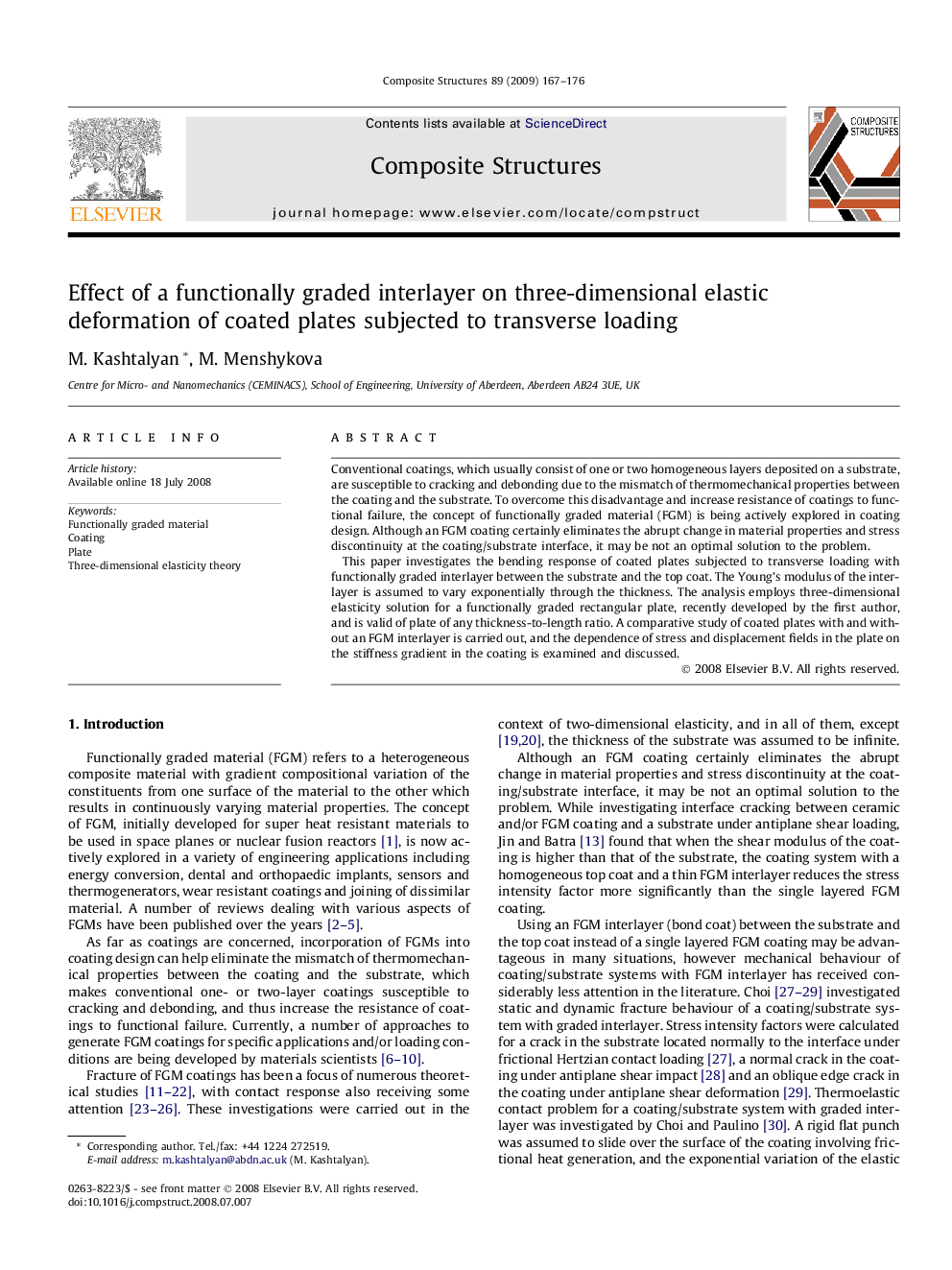| Article ID | Journal | Published Year | Pages | File Type |
|---|---|---|---|---|
| 253457 | Composite Structures | 2009 | 10 Pages |
Conventional coatings, which usually consist of one or two homogeneous layers deposited on a substrate, are susceptible to cracking and debonding due to the mismatch of thermomechanical properties between the coating and the substrate. To overcome this disadvantage and increase resistance of coatings to functional failure, the concept of functionally graded material (FGM) is being actively explored in coating design. Although an FGM coating certainly eliminates the abrupt change in material properties and stress discontinuity at the coating/substrate interface, it may be not an optimal solution to the problem.This paper investigates the bending response of coated plates subjected to transverse loading with functionally graded interlayer between the substrate and the top coat. The Young’s modulus of the interlayer is assumed to vary exponentially through the thickness. The analysis employs three-dimensional elasticity solution for a functionally graded rectangular plate, recently developed by the first author, and is valid of plate of any thickness-to-length ratio. A comparative study of coated plates with and without an FGM interlayer is carried out, and the dependence of stress and displacement fields in the plate on the stiffness gradient in the coating is examined and discussed.
